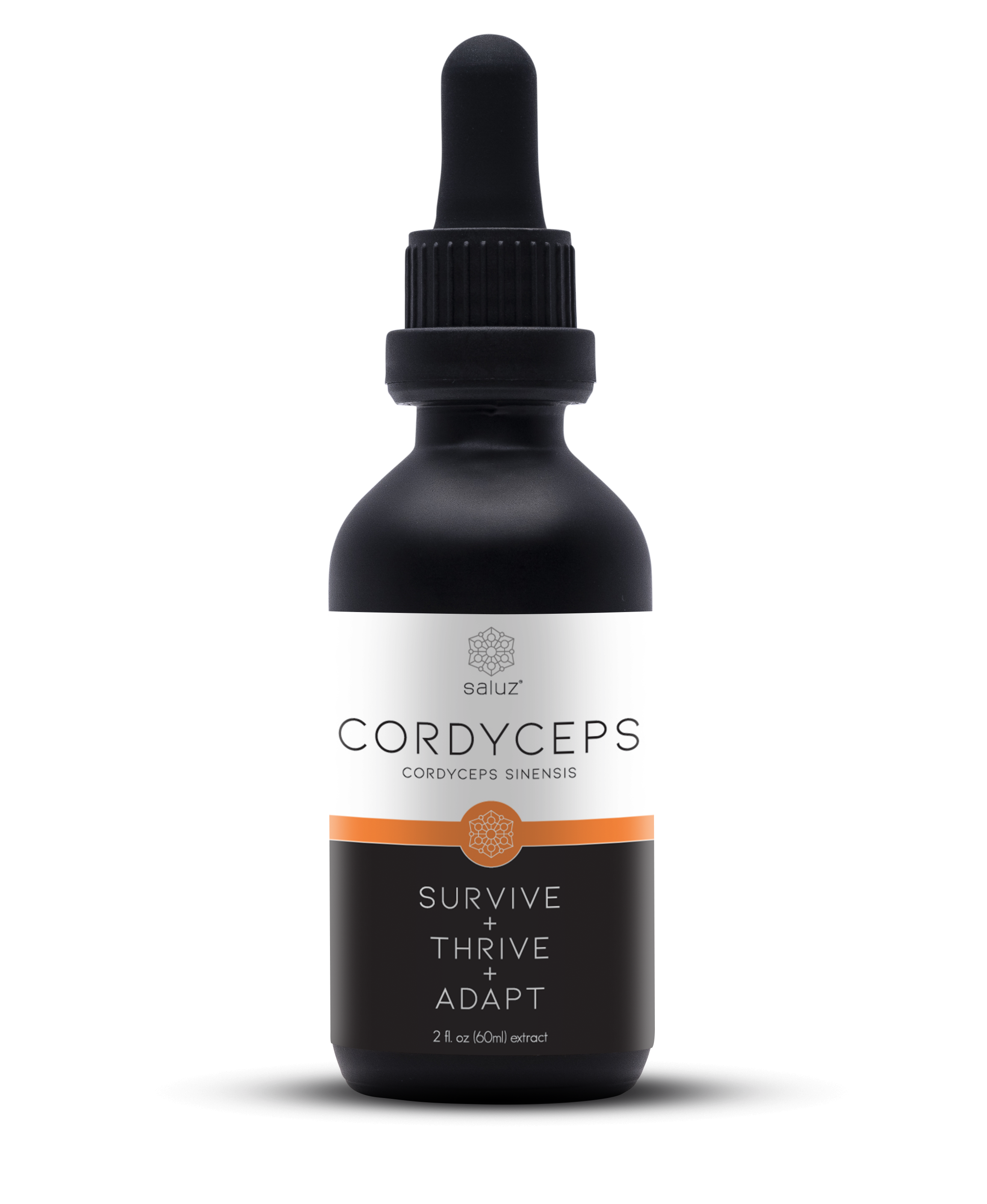Cordyceps (Energy) Mushroom Tincture 2 oz.
Cordyceps (Cordyceps Sinensis)
Source: Certified Organic Farms USA
Blends: Vital Source, Protect Source
Key Bioactive Compound
-Cordycepin
Benefits:
- Physical performance
- Energy
- Endurance
- Recovery
- Lung/heart health*
- Liver & kidney
- Cholesterol LDL
Summary:
Contains active ingredients for boosting athletic performance and vitality, and supports respiratory ailments.
The Story
Cordyceps are a unique parasitic mushroom that literally consumes death to create life by attacking and growing in caterpillar larvae. Wild harvested cordyceps are rare and extremely expensive but our USDA organic grown Cordyceps Sinensis are painstakingly cultivated from the highest quality Tibetan strains, reproducing the same light, temperature, and oxygen levels as its native environment. Our strand has the same genetics of the original, found where it was originally located. The result is a cordyceps with maximum potency and in fact have more active compounds then wild harvested.
Strong evidence exists that Cordyceps can immediately boost production and efficiency of ATP production in our bodies. ATP or Adenosine triphosphate is an organic compound and hydrotrope that's crucial to providing energy to our cellular processes. The result is an immediate boost to general athletic performance in humans regarding efficient energy metabolism resulting in increased endurance, reduced fatigue and quicker recovery. Asian Olympic athletes and world record performances are associated with the use of Cordyceps. This fungi medicine contains active ingredients cordycepin, cordycepic acid, sterols (ergosterol) and have been reported to exert immunomodulatory, anti-inflammatory, anti-microbial and antitumor effects in specific cancers.*
A potent functional mushroom to enhance performance or for chronic disease treatments, a potent adaptogen to add to use as a varietal or in our blends.
Our Cordyceps contains:
mycelium, primordia, fruiting bodies, and extracellular compounds
Clinical Studies
New Findings on Cytokines from Yunnan University Summarized [Cordycepin (3 '-deoxyadenosine) Promotes Remyelination Via Suppression of Neuroinflammation In a Cuprizone-induced Mouse Model of Demyelination]
“New Findings on Cytokines from Yunnan University Summarized [Cordycepin Promotes Remyelination Via Suppression of Neuroinflammation In a Cuprizone-Induced Mouse Model of Demyelination].” News of Science, NewsRX LLC, 2019, p. 1887.
Cordycepin Suppresses Excitatory Synaptic Transmission
Yao LH, Huang JN, Li CH, et al. Cordycepin suppresses excitatory synaptic transmission in rat hippocampal slices via a presynaptic mechanism. CNS Neurosci Ther. 2013;19(4):216-221. doi:10.1111/cns.12060
Cordyceps inhibits ceramide biosynthesis and improves insulin resistance and hepatic steatosis
Li Y, Talbot CL, Chandravanshi B, et al. Sci Rep. 2022;12(1):7273. Published 2022 May 4. doi:10.1038/s41598-022-11219-3
Cordyceps fungi: natural products, pharmacological functions and developmental products
Cordyceps militaris improves tolerance to high intensity exercise after acute and chronic supplementation
Cordyceps as an Herbal Drug
Lin BQ, Li SP. In: Benzie IFF, Wachtel-Galor S, eds. Herbal Medicine: Biomolecular and Clinical Aspects. 2nd ed. Boca Raton (FL): CRC Press/Taylor & Francis; 2011.
*These Statements have not been evaluated by the Food and Drug Administration. This product is not intended to treat cure or prevent any disease.
| Brand | Saluz.io |
|---|---|
| Features | Made in USA |






